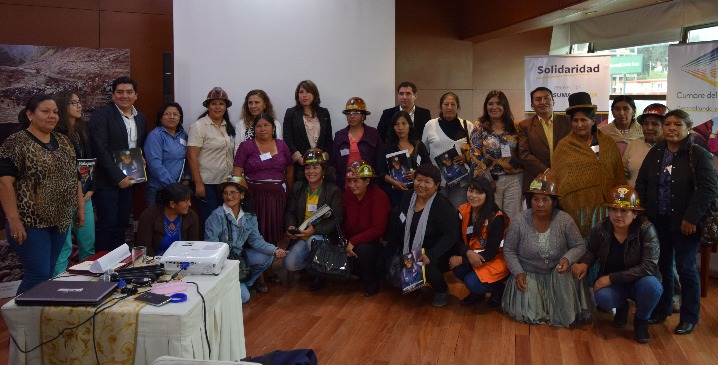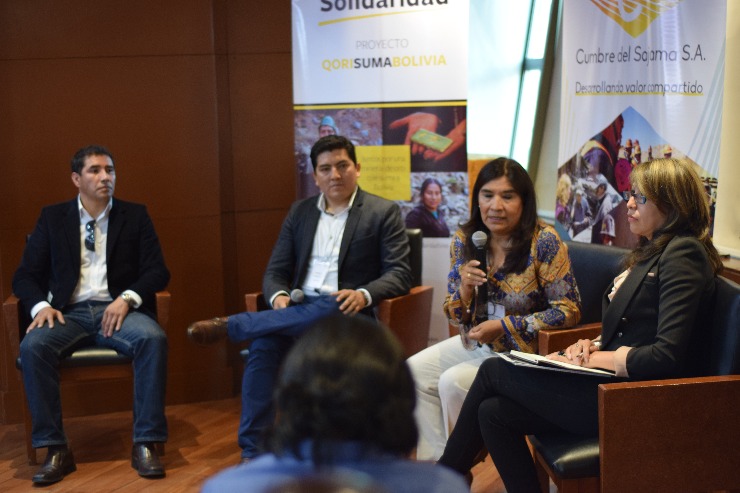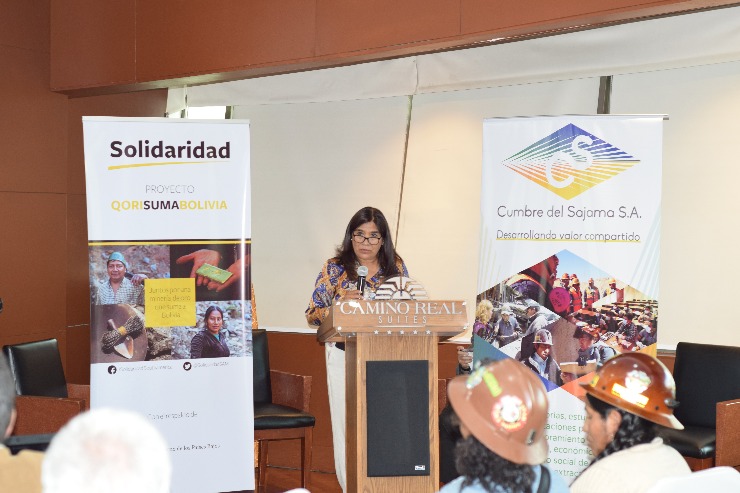
During the event, the main research results were presented, which assessed three key groups: members of mining cooperatives, independent miners and employed miners.
- Research on “Women miners in Bolivia” revealed that only 48% have access to health insurance.
- Collective action and participation in mining cooperatives is a path towards overcoming these obstacles.
The invisible women
It is sometimes said that if a woman goes inside a mine, the gold vein dries up. This kind of stigma in the Andean culture reduces equitable access to income for women and their families in artisanal mining. Despite that, women are found all across the Bolivian artisanal mining sector, working side by side with men, even though their contribution remains invisible. In recent years, women have come together and worked hard to gain a more significant role in cooperatives and companies within a supply chain that is stereotypically considered to be a masculine profession.
“My father left us while at the mine. Older siblings such as myself had the responsibility to support our mothers before going to school. Nevertheless, thanks to my father, I’m a miner and proud to be one,” said Sinforsa Rodriguez Paco, from the Potosí Mining Cooperatives Federation.

Relevant research results
Among the most relevant aspects of the research discussed at the symposium, it is worth noting that about half of the respondents are widowed, divorced or single mothers. This, of course, means they carry a large economic burden as the sole providers for their families. The high vulnerability of women in this area is also related to limited access they have to basic services; only 28% of them have access to basic hygiene/sewage services and only about half have any form of health insurance. Respiratory diseases, such as silicosis, are very common with an incident rate as high as 30%. In addition to the high risks linked to mining, 75% of independent women miners admit to not wearing any personal safety equipment.
“We would like to improve our living conditions. We don’t want to stay at the mines forever because it’s very hard and full of sacrifices. We wouldn’t like this for our children. (…) Men have always discriminated against us. They have undermined our rights by not allowing us in their governance bodies and stripping our meager income from us for being women,” said Carmen Pinola from the San José de Oruro Cooperative.

A focus on gender
“Women miners in Bolivia” is the result of the second phase of Solidaridad’s gold programme in South America, which supports gender equity in the mining sector. The first area of concern was the pallaqueras (independent female miners) social conditions in Peru. This assessment was developed within the Fair Gold Project (Proyecto Oro Justo), and financed by the European Union.
Solidaridad gold programme manager in South America, Franco Arista, spoke on behalf of the pallaqueras during the symposium. These women work on the slopes and outskirts of mines where they scavenge minerals thrown away by the official male miners. However, thanks to the requirements of certification, a group of women have been recognized as part of the workforce in some mines and provided with safer work conditions.
“Sexism exists but we have the courage to show that we are capable,” said María Eugenia Jalile, from the Pando Mining Cooperative.
Being able to gather and join forces is an essential criteria for developing influential female representatives and for the overall progress of women miners’ communities. The Peruvian government is currently looking for ways to include women in the new formalization process.
Learn more about the progress of mines in South America on the interactive gold programme world map.
